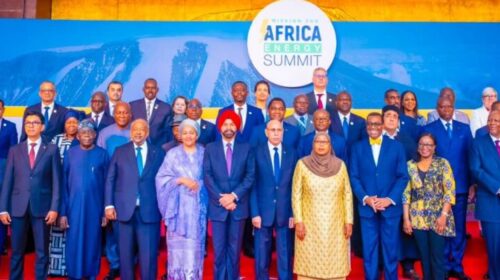South Africa’s power crisis puts mining sector at risk
South Africa’s dire power situation is putting pressure on
many commercial and industrial players that rely heavily on stable supply.
According to Ted Blom, independent power and mining expert
and commentator and a partner at Energy & Mining Advisors: “More than 30
percent of South African mining projects will be terminated prematurely due to
additional power costs if suitable solutions are not found within the next 12
months.”
His comments follow Mineral Resource and Energy Minister
Gwede Mantashe’s announcement last week at Mining Indaba that the government
had conceded that it must allow mining companies to produce energy for their
own use
“Most mining projects in Africa provide their own power for
operations, but that just increases the hurdle rate for committed capital to
develop and run the project. The big difference is that provision of own
power is already factored into those projects whilst South African projects
have NEVER factored in the costs of providing own power.” Tom Blom added.
“The whole South African mining and beatification sector was
built on the back of cheap and abundant electricity availability. The current
environment has changed drastically and most businesses (including miners and
smelters) have NOT seen this coming. Only in the past two years has business
started waking up to the new reality, but NONE have reviewed their business
models to incorporate the new electricity reality.”
Load-shedding to continue
A recent report by the Council for Scientific and Industrial
Research (CSIR)’s Energy Centre, analyzing South Africa’s load-shedding,
indicated that it cost the country’s economy between ZAR60bn and ZAR120bn in
2019 alone.
The total economic impact of load-shedding in South Africa
could be as high as ZAR338bn over the past 10 years, according to the report
titled Setting up for the 2020s: Addressing South Africa’s electricity crisis
and getting ready for the next decade. The CSIR warned that load-shedding was
expected to continue for the next two to three years as the country will sit
with a supply gap until 2022.
SOUTH AFRICAN MINERS KEEN TO START GENERATING THEIR OWN
POWER.
South African miner Gold Fields has wanted to build a solar
plant at its South Deep gold mine outside Johannesburg for more than three
years.
But it is still waiting for ministerial approval and a
license from the regulator to build a large generating facility.
Red tape has cost miners tens of millions of dollars in lost
revenue over the past year, as power blackouts have dented their output at a
time when they could have been generating their own power, they say.
After some mines shut down during the worst power outages on
record in December, President Cyril Ramaphosa promised to ease regulatory curbs
on “self-generation”.
But analysts say it could be months before miners can start
building their own plants, as struggling state power utility Eskom warns power
cuts could continue over the next 18 months.
“Government must accelerate the approval of renewable power
projects planned by miners so that they can deal with job-destroying tariff
hikes and supply interruptions,” Gold Fields Chief Executive Nick Holland told
Reuters.
South Deep, one of the world’s deepest gold mines, needs
large amounts of power for cooling and ventilation. Gold Fields says its solar
project could provide a fifth of the mine’s annual power needs for 20 years.
Lingering constraints
Promises to unshackle private power generation prompted
cautious optimism at a mining conference in Cape Town this week.
Mineral Resources and Energy Minister Gwede Mantashe told
the Investing in African Mining Indaba that officials were revising the
Electricity Regulation Act (ERA) to allow companies to generate power for their
own use without a license.
But Mantashe said miners would still have to register their
generating facilities, which companies say is time-consuming.
Some analysts expect amendments to the ERA will have to go
through public participation, which could delay matters.
“If there is political will, it could be done in months. But
if you look at the past, they’ve been talking about amending the flawed
schedule 2 (of the ERA) since 2017,” said Chris Yelland, energy analyst and
managing director at EE Business Intelligence, a Johannesburg-based
consultancy.
Sibanye-Stillwater CEO Neal Froneman said Mantashe’s
comments were “a big step forward”.
“But they don’t solve all the problems,” he said, referring
to potential curbs on selling power to the national grid.
The Minerals Council South Africa says miners could bring up
to 1,500 MW of generating capacity online in the next few years.
“The government has recognized that private power,
particularly generating for self-use, is critical to solve the crisis, we are
the key part of the solution,” said Roger Baxter, the industry body’s chief
executive. .





